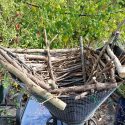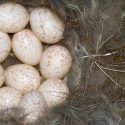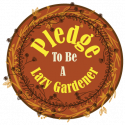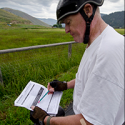 Photo ©
Keith Williams
Photo ©
Keith Williams

Hoot Suite
The leaves are falling and the owls are hooting. During autumn, juveniles disperse and males stand guard on their territories resulting in increased vocalization among the who’s who of the owl world. Now is the time to build and install owl nest boxes or in the case of Great Horned Owls, a nest cone. Find out what owls live in your region and habitat, and download a free plan using our Right Bird, Right House tool.
Try your hand at our easiest project, a Great Horned Owl nest cone. Why a cone? Great Horned Owls are extraordinarily adaptive in their nest site selection. They use old nests such as those of a Red-tailed Hawk or an American Crow, cliffs, deserted buildings, tree snags, and one NestWatcher even reported a nest in her balcony flower pot! They do not need anything fancy and our nest cone mimics an “old” bird nest. These owls are widespread across North America and readily adapt to a range of habitats.
If you decide to create a nest cone, we received some helpful tips from a NestWatcher:

Understanding an Ecological Trap
Birds don’t choose where to place a nest arbitrarily. Rather, they rely on signals from the environment, such as cavity size, food availability, and abundance of predators nearby. However, sometimes those signals become uncoupled from actual habitat quality. This can lead to an “ecological trap.” Learn how you can reduce the risk of setting an ecological trap on your property or managed trail in our latest blog post.

Garden “Messy” For Birds This Fall
Habitat Network is running a campaign to help birds and other wildlife by encouraging gardeners to do less yard work. Join thousands of others who are going to sit back and relax this fall instead of cleaning up their gardens.
Did you know that birds such as Carolina and Bewick’s Wrens use last season’s leaves and grasses in their nests? Overwintering birds also find insects and spiders in unraked leaves when other foods are scarce. Grasses and flowers that have gone to seed will be enjoyed by resident finches and sparrows. By leaving your gardens “messy” (i.e., leaving habitat) this fall, you can support nesting birds and other wildlife! Learn more about the campaign, and take the Lazy Gardener pledge.

Losing Time
You may have noticed that NestWatch data entry no longer asks you for the time of day that you made your nest visit. After hearing feedback on how the Time field slowed down data entry, and upon reflection on whether or not we needed this to do good science, we made the decision to cut Time.
Our Nest Check Data Sheet does not yet reflect the change, but we will be updating this during the winter. We hope that this will improve your workflow and create fewer errors for participants. As always, we thank you for your feedback on how we can make data entry easier while still collecting quality data.